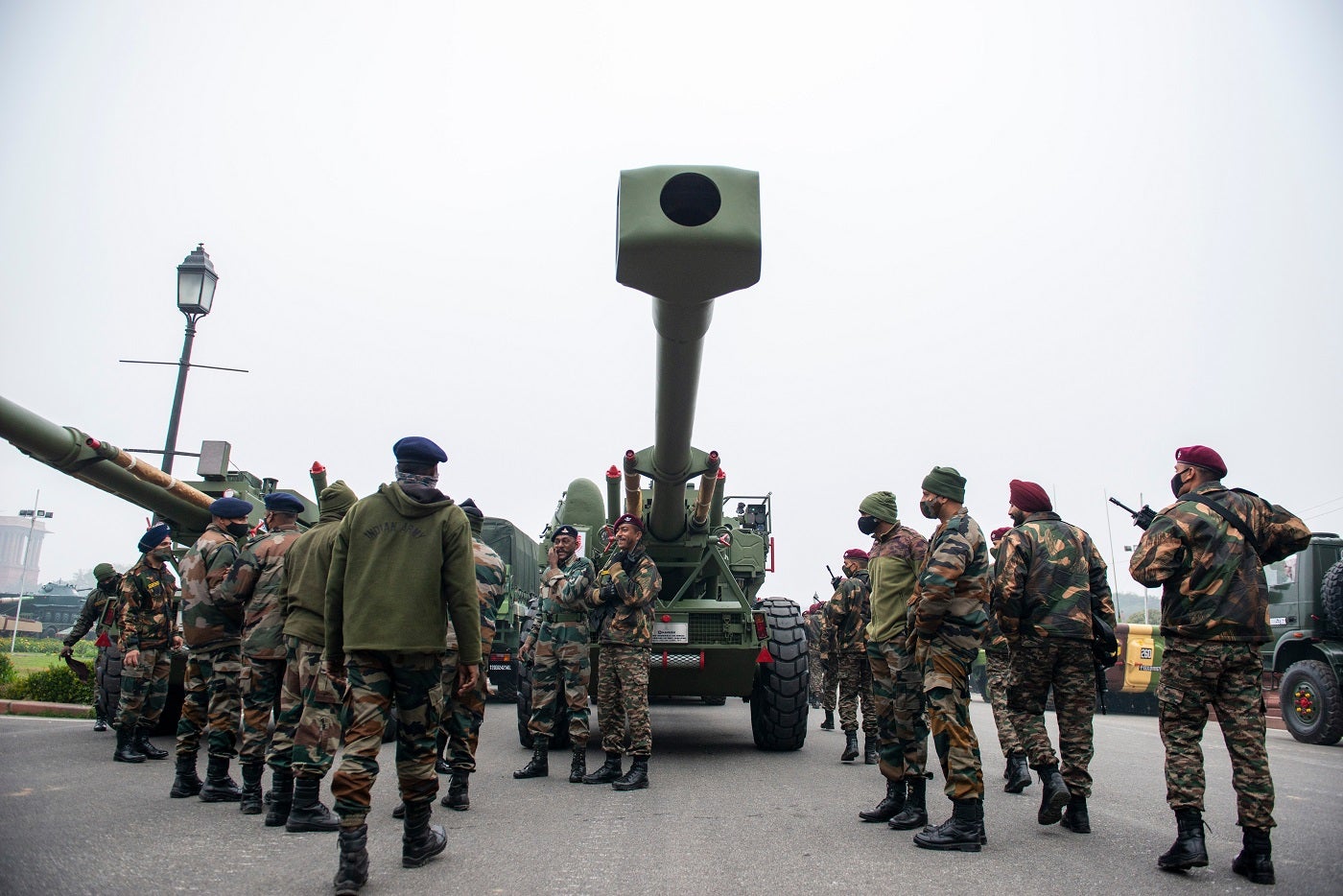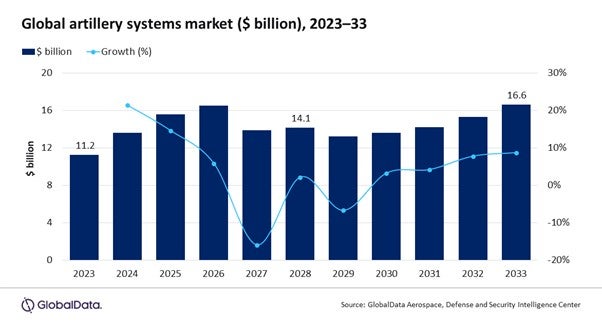
To replace ageing artillery systems and enhance their military capabilities, nations across the globe are embarking on modernisation programmes that are set to reshape the global artillery systems market.
According to a comprehensive report by GlobalData, titled “Global Artillery Systems Market 2023-2033,” this wave of modernisation is projected to drive cumulative spending on artillery systems to a staggering $153bn between 2023 and 2033, culminating in a market value of $16.6bn by 2033.

Discover B2B Marketing That Performs
Combine business intelligence and editorial excellence to reach engaged professionals across 36 leading media platforms.
The report also highlights the role played by self-propelled artillery and the emergence of smart munitions in this transformative journey.

Vinayak Kamath, aerospace and defence associate analyst at GlobalData, emphasises the significance of self-propelled artillery in this global shift. “The self-propelled artillery segment is expected to witness the largest amount of spending over the forecast period. This is mainly because of their advantages over towed artillery systems in terms of mobility and survivability enabled by their shoot-and-scoot features.
“The US is analysed to emerge as the largest spender in the self-propelled artillery segment, with a cumulative spending of $9.7 billion in procuring systems like the M109A7 Paladin and next-generation Extended Range Cannon Artillery (ERCA) over the next ten years.”
One prominent trend highlighted by the report is the increasing focus on reducing import dependence and establishing local manufacturing and maintenance capabilities. The Russia-Ukraine conflict and subsequent sanctions on weapon transfers have compelled many nations to look inward.

US Tariffs are shifting - will you react or anticipate?
Don’t let policy changes catch you off guard. Stay proactive with real-time data and expert analysis.
By GlobalDataIndia, for instance, is introducing indigenous artillery systems like the Dhanush towed artillery and ATAGS platforms, aimed at replacing ageing FH77 artillery units in service since the 1980s. Additionally, Indian companies are supplying Pinaka Multiple Launch Rocket Systems (MRLS) to bolster their artillery capabilities.
A noteworthy development in the artillery landscape is the growing interest in smart munitions, which promise to revolutionise artillery systems’ capabilities. With smart munitions, artillery systems can undertake a diverse range of firing missions that were once beyond the realm of conventional artillery.
For example, US-based SRC is pioneering electronic warfare systems that can be delivered via 155mm artillery shells, enabling the interception and jamming of signals deep within enemy territory.
Kamath highlights the global effort to develop various types of smart munitions, echoing the sentiments of countries like Germany, the UK, and France.
“Similar development initiatives for other types of smart munitions are currently being undertaken by countries like Germany, the UK, and France. This will lead to increased demand for launcher platforms, including towed artillery, self-propelled artillery, and naval artillery, in the near future.”





